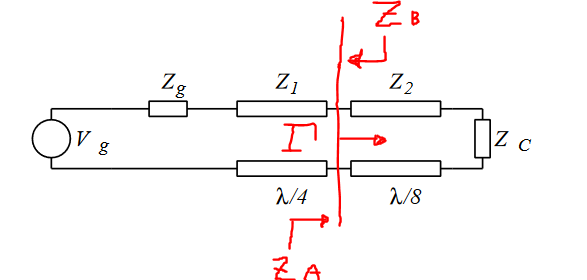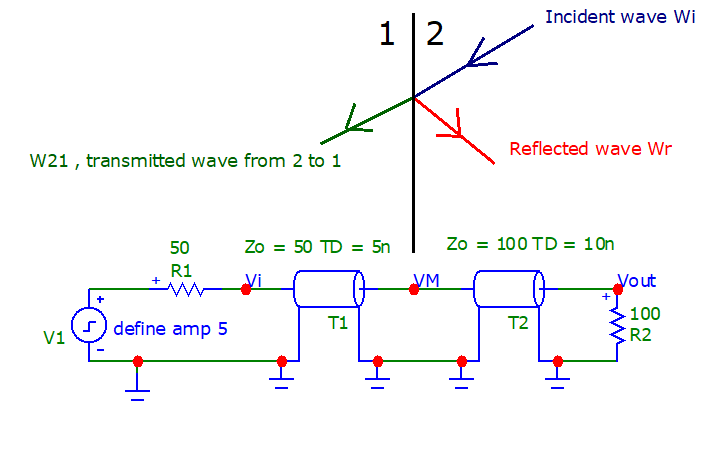I have a question, let's say that we want to calculate the Reflection Coefficient that we see by watching from left to right of the red-line this circuit:
Let's say that:
- Za= Equivalent Impedence of the circuit to the right of the red-line
- Zb= Equivalent Impedence of the circuit to the left of the red-line
My question is which of these is the formula of Γ:
- Γ=(Za-Zb)/(Za+Zb)
- Γ=(Za-Z1)/(Za+Z1) (I think that this is the answes but I'm not sure)
- Γ=(Zb-Z2)/(Zb+Z2)
What is the correct formula for calculate Γ?Why?



